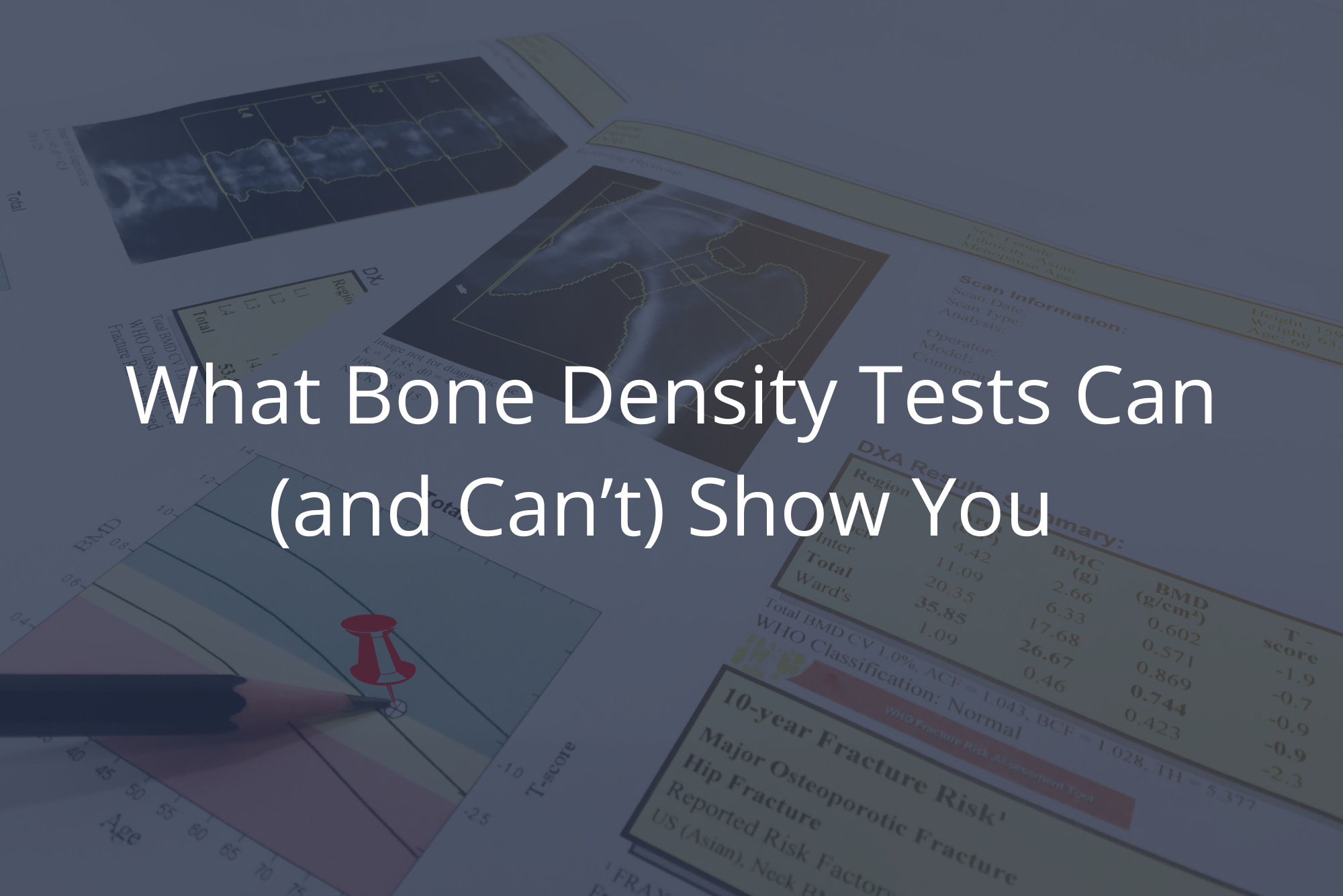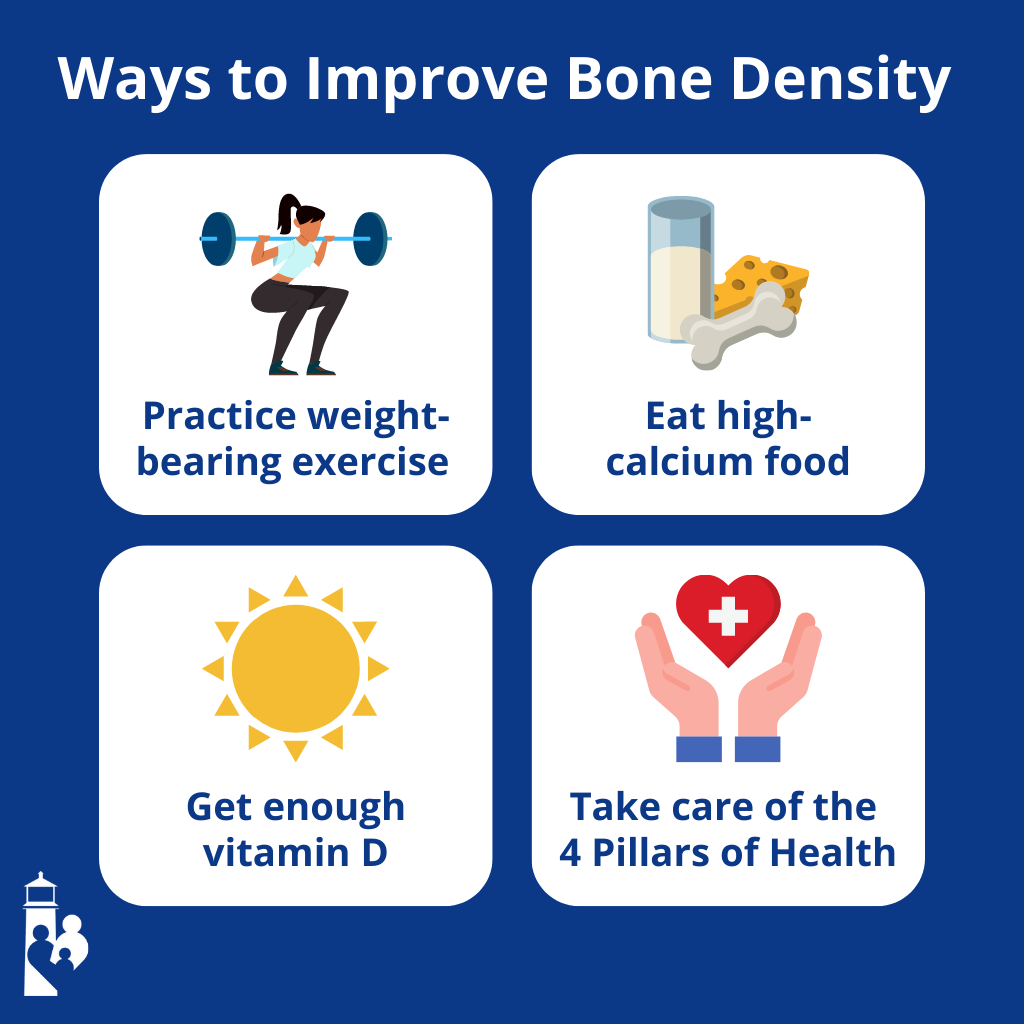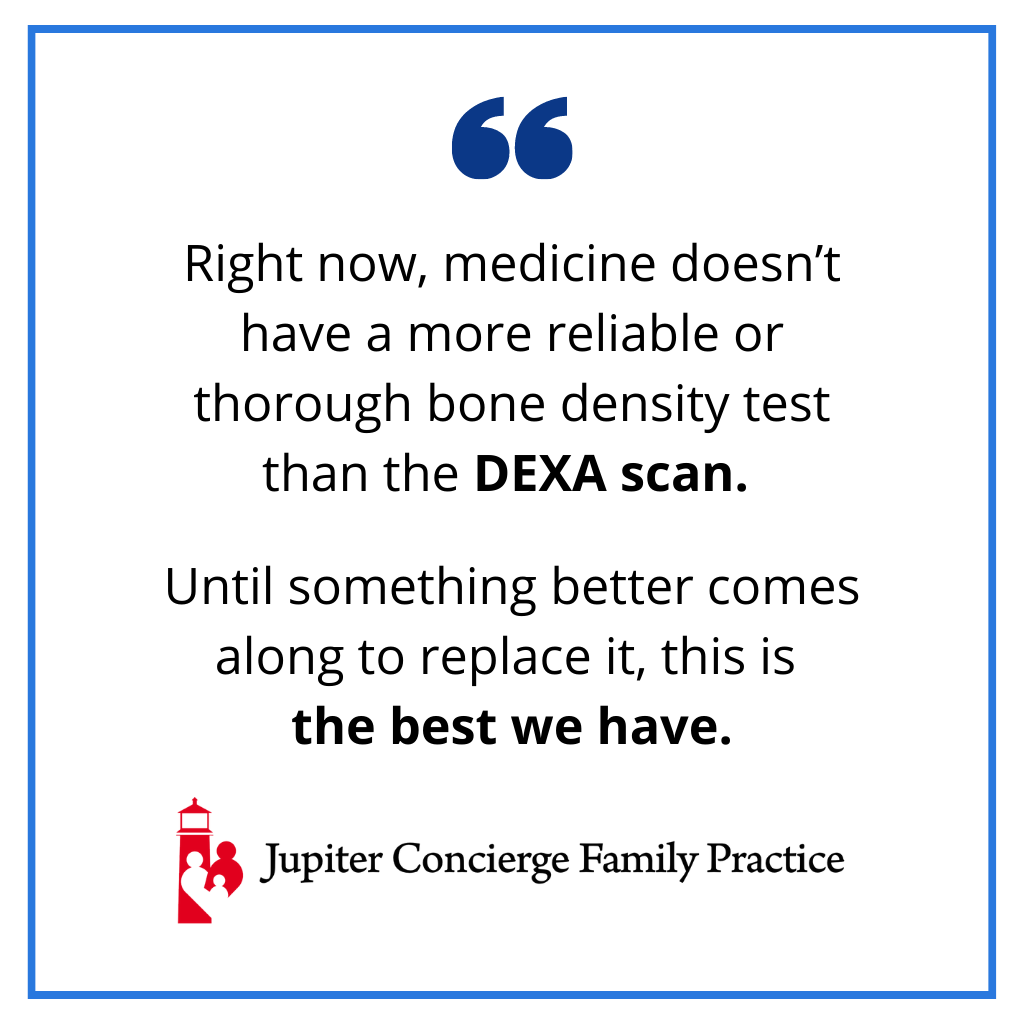
Over time, our individual involvement with the healthcare system typically increases. Whether due to recommended health screenings or managing symptoms related to a disease we develop, maintaining health after age 50 can start to look very different.
As I’ve said here before, some of our typical medical interventions are outdated and some medical tests aren’t worth the risk. All medical tests should be carefully weighed and interpreted, so that the results are meaningful and the risks are understood.
Today, I want to look into bone density tests (also known as DEXA scans) to unearth the benefits — and common misconceptions — about these tests.
What Is a Bone Density Test?
Let’s first discuss what a bone density test is, and at what age it becomes “a thing.”
Sometimes, the best way to define something is to say what it isn’t. In that spirit…
- A bone density test is NOT an MRI.
- A bone density test does NOT detect cancer.
- A bone density test does NOT show arthritis.
A bone density test is a low-level X-ray that measures the mineral content of the bone. Commonly known as a DEXA (or DXA) scan, the test uses dual-energy X-ray absorptiometry.
When bone density is low, the risk of fracture increases. Weakened (or brittle) bones that are prone to breaking are the key symptoms of osteoporosis and its precursor, osteopenia. Although this problematic bone condition affects women more than men, it’s a concern for both genders, especially with age.
The recommended age for a DEXA scan can vary, depending on the individual. Here’s who the Bone Health & Osteoporosis Foundation (BHOF) recommends for bone density tests:
- People who have broken a bone after age 50
- People aged 50+ with risk factors
- Women aged 65+ without risk factors
- Men aged 70+ without risk factors
Commonly accepted risk factors include a family history of osteoporosis, frequent falls, inadequate vitamin D, smoking, and excessive alcohol intake.
Understand Your Bone Density Test Results
Measurements
The results of a DEXA scan appear in two scores, the T-score and the Z-score.
T-score. This score compares a patient’s bone density to a young, healthy adult’s bone density. A normal T-score is zero. If the T-score is a negative number, it indicates the bones are weaker than what’s considered “normal.” A T-score of –2.5 or below is usually indicative of osteoporosis.
Z-score. The Z-score compares a patient’s bone density to people in their own age group. Z-scores are only used in pre-menopausal women and men under 50. Because we don’t have copious data for these groups, this number isn’t as helpful as the T-score in getting actionable insights, and you can generally ignore it.
Accuracy
Bone density tests have an unfortunate capacity for false readings. Variations like healed compression fractures and calcium buildup in joints can indicate a higher bone density than actually exists.
Further skewing of the results can arise from:
- Patient movement during the exam
- Incorrect placement of the machine
- Metal plates in the patient’s body
- Ethnicity
- Degenerative joint disease
- Past bone trauma
The machines themselves also vary, which causes problems with accuracy. In fact, bone density tests only give valuable and actionable insights if taken consistently over time with the same machine, preferably with the same reader.
Right now, medicine doesn’t have a more reliable or thorough bone density test than the DEXA scan. Until something better comes along to replace it, this is the best we have.
Final Thoughts
Bone density tests are far from perfect, but they can still offer useful insight into the overall trend of your bone strength over time (under the conditions mentioned above).
Although bone density tests have their weaknesses, T-score trends can warn you of developing osteoporosis and allow you to make meaningful lifestyle changes to improve bone health. The best ways to improve your bone density are practicing weight-bearing exercise, eating high-calcium food, getting enough vitamin D, and — of course — taking care of all four pillars of health.

Dr. David Rosenberg
Dr. Rosenberg is a board-certified Family Physician. He received his medical degree from the University of Miami in 1988 and completed his residency in Family Medicine at The Washington Hospital in Washington, Pennsylvania in 1991. After practicing Emergency Medicine at Palm Beach Gardens Medical Center for two years, he started private practice in Jupiter, in 1993. He is an avid baseball fan and Beatles fanatic, since he was 8 years old. He has been married to his wife, Mary, since 1985 and has three grown children.
David completed additional studies at Mercer University, Macon, Georgia and obtained a BS in Chemistry in 1983.
“My interests include tennis, snow skiing, Pilates and self-development.”


